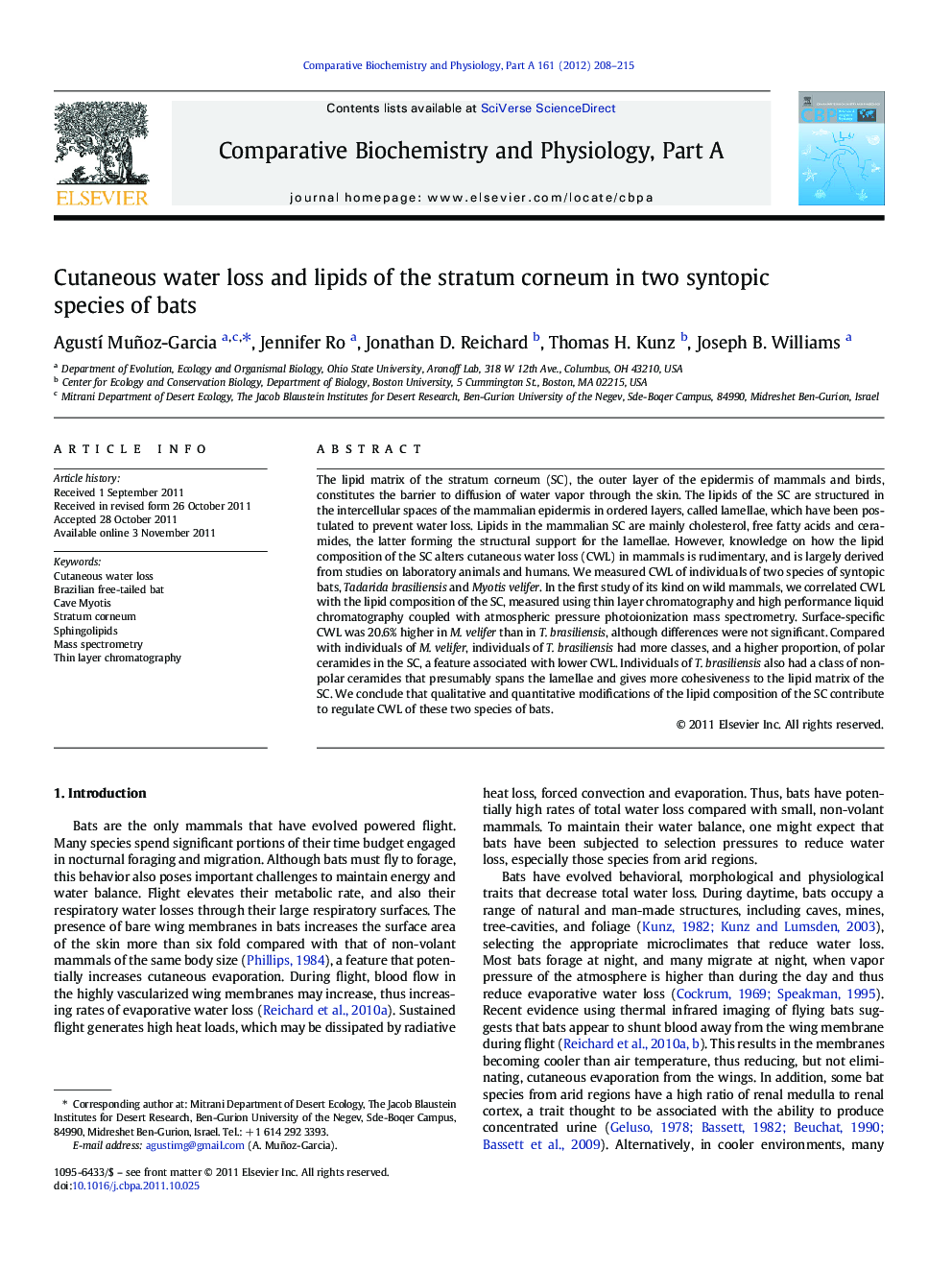| Article ID | Journal | Published Year | Pages | File Type |
|---|---|---|---|---|
| 1972686 | Comparative Biochemistry and Physiology Part A: Molecular & Integrative Physiology | 2012 | 8 Pages |
The lipid matrix of the stratum corneum (SC), the outer layer of the epidermis of mammals and birds, constitutes the barrier to diffusion of water vapor through the skin. The lipids of the SC are structured in the intercellular spaces of the mammalian epidermis in ordered layers, called lamellae, which have been postulated to prevent water loss. Lipids in the mammalian SC are mainly cholesterol, free fatty acids and ceramides, the latter forming the structural support for the lamellae. However, knowledge on how the lipid composition of the SC alters cutaneous water loss (CWL) in mammals is rudimentary, and is largely derived from studies on laboratory animals and humans. We measured CWL of individuals of two species of syntopic bats, Tadarida brasiliensis and Myotis velifer. In the first study of its kind on wild mammals, we correlated CWL with the lipid composition of the SC, measured using thin layer chromatography and high performance liquid chromatography coupled with atmospheric pressure photoionization mass spectrometry. Surface-specific CWL was 20.6% higher in M. velifer than in T. brasiliensis, although differences were not significant. Compared with individuals of M. velifer, individuals of T. brasiliensis had more classes, and a higher proportion, of polar ceramides in the SC, a feature associated with lower CWL. Individuals of T. brasiliensis also had a class of non-polar ceramides that presumably spans the lamellae and gives more cohesiveness to the lipid matrix of the SC. We conclude that qualitative and quantitative modifications of the lipid composition of the SC contribute to regulate CWL of these two species of bats.
